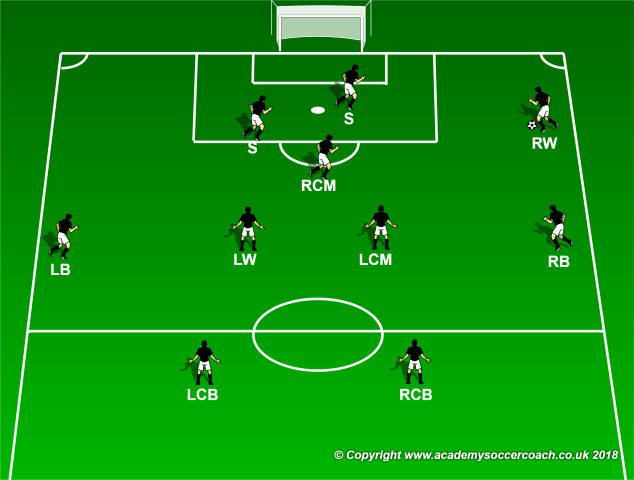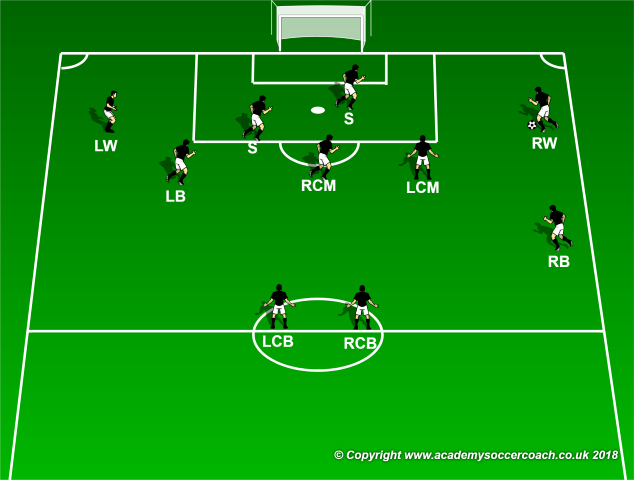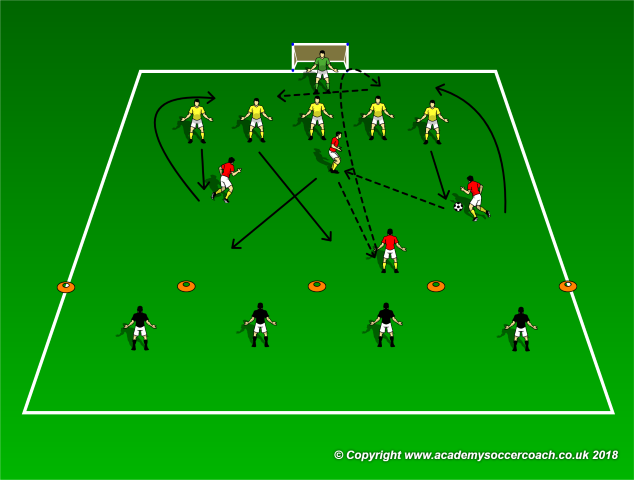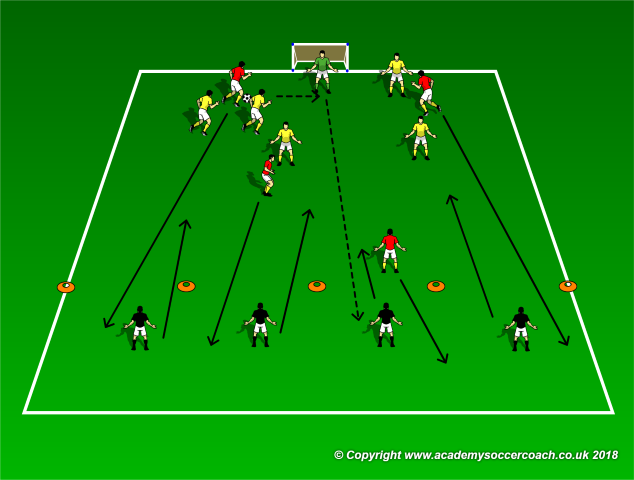By Mike Smith
If you are of the mind the best defense is a good offense, then practicing in a 2-4-4 deserves your consideration, as chances are your side is doing it anyway. When I run a 4-4-2, I love the standard ball out to the wing mid, service into two forwards , one on each post, with a center mid lurking around the pk spot. This is bread and butter and will always create chances in my opinion. This is essentially a 4 player top line and what better way to keep the attack going than another line of 4 cued up ready to strike? Nothing.
In fact, two strong center defenders who can hold deep and handle the drop and switch is all a team really needs to make the 2-4-4 work. Barring a really speedy opposing forward ( faster than your team can drop and switch the ball) the 2-4-4 can apply almost relentless pressure to the defending side. The trick is to practice it, and in my opinion, skip immediate pressure and drop in to your defensive third when the ball is lost to really make sure you aren’t burnt on the counters. Applying immediate pressure with numbers up in attack is a valid approach as well but regardless of how your group recovers, pressing a team into their box with 8 players up is an intimidating style to deal with. For example:

The diagram above shows the perfect world set up of the 2-4-4.( I have left out the defenders so as not to clutter up the diagram, but any reasonable person can assume if your attack looks like this, there will be 6 – 8 defenders crunched inside the box). Of course, few of us live in a perfect world so in reality, the attack often looks something like this:

Perhaps formidable, but really ripe for a counter attack if the ball is lost anywhere except in the net or out the end. The key to making the 2-4-4 work as a matter of a system is the positioning and patience of the second group of 4, combined with the speed at which the first 4 drops in if the attack doesn’t work. Try this drill at your next practice to help get your team thinking of attacking in waves of 4.
Set Up
Section off part of your pitch into at least a 40 x 40 yd box up to using half the field if you would like. I usually place a small goal on one touch line and use the width of a half field to get a 50-55 yd wide by 60-65 yd long area. 13 field players plus a keeper play inside this area ( as shown below ). Section off a 5 to 10 yd section at the end opposite the goal for the second wave of 4 to come in from.

The players are divided into 5 defenders plus the keeper vs two teams of attackers, ( shown above in red and black ). Play starts with the attacking team inside the scoring area trying to combine for a goal as in regular play. The red attackers may play back to the black attackers however, if this is done, the red team must drop into the box and the black team must take the field and try to score. IF the defending team wins the ball, they must play it out to the team waiting inside the box to start another attack. It may seem like a give away during the exercise but this simulates the defenders finding the feet of midfielders during a match.

In the above diagram, the keeper clears out a shot, the black team comes in and the red team drops out to “ reload”. While this is an attacking drill, the defenders will get lots of work getting organized, pushing up and recovering and making controlled passes to the feet of their midfielders.
Coaching Points
Coaches should make sure the attackers create good chances and keep the ball and attack going by reloading. The most common instance will be when a cross or shot is missed by an attacker; instead of forcing another shot by turning into pressure, simply dropping the ball out to the next wave and recovering will keep the pressure on the defending side. The coach should manage the drill and make this happen.
By Mike Smith
Currently the Head Coach for University Heights Academy Boys Soccer in Hopkinsville, KY , Mike is in his 14th year as a high school head coach with 23 years coaching experience overall and 34 year as a student and fan of the game. He holds a USSF D License.


